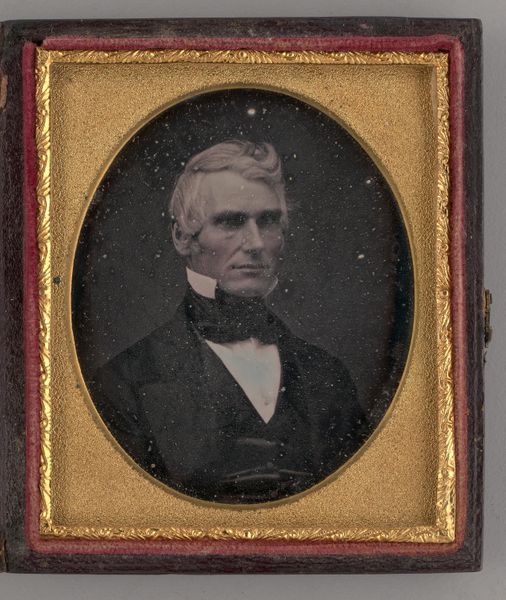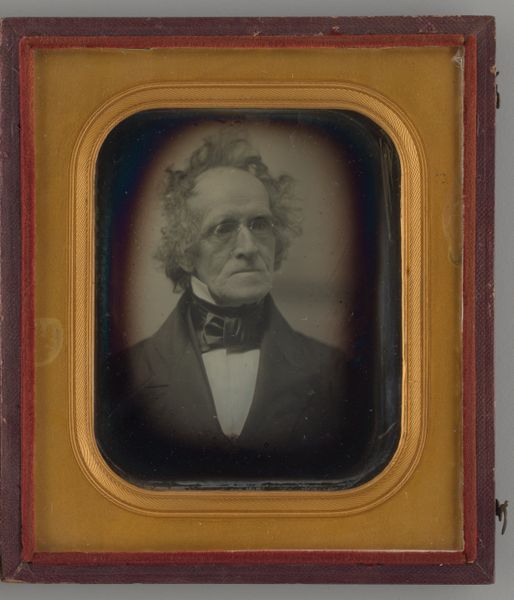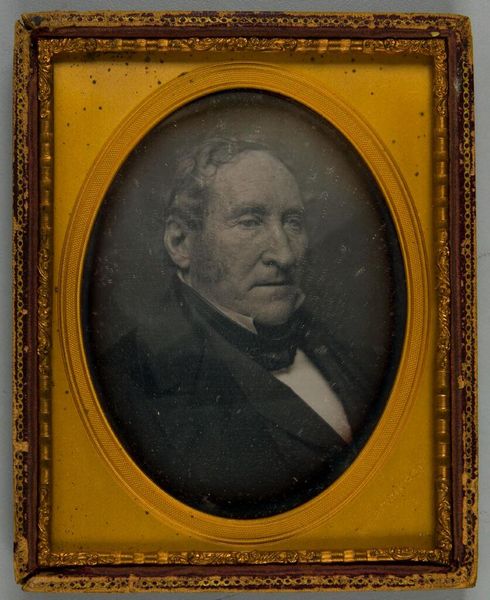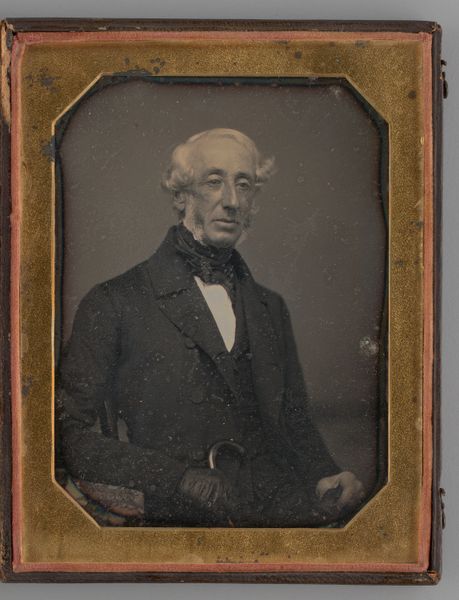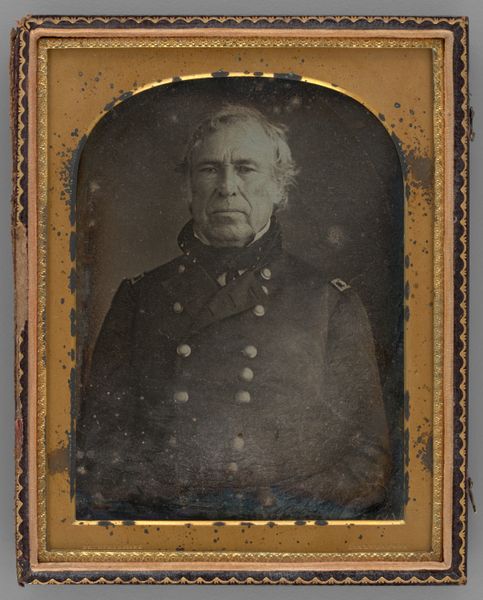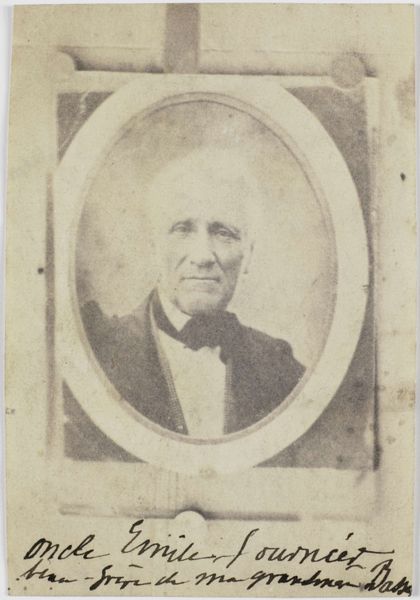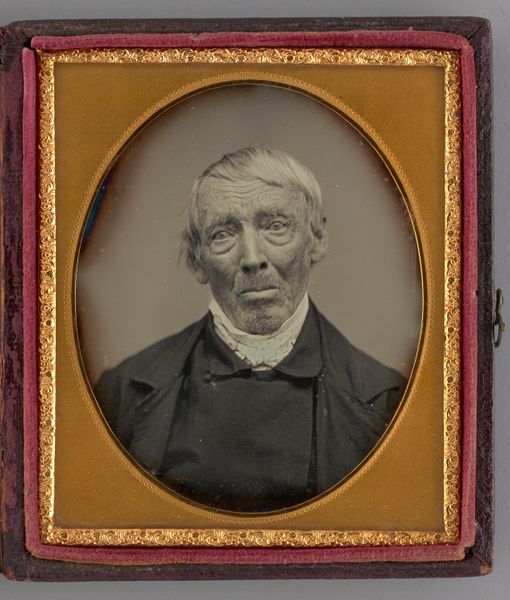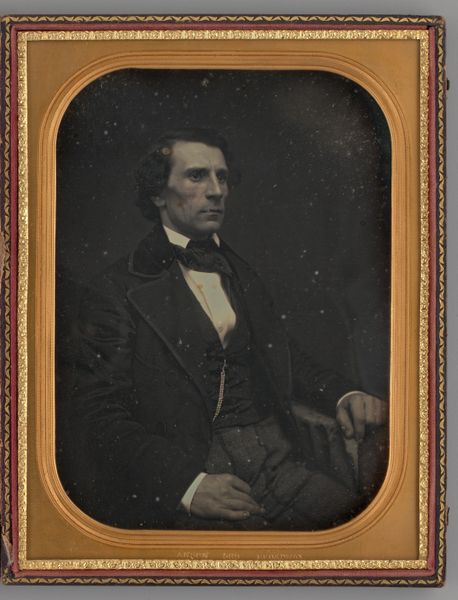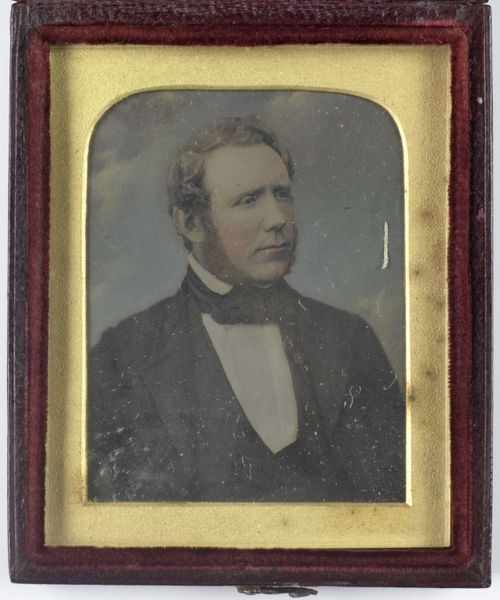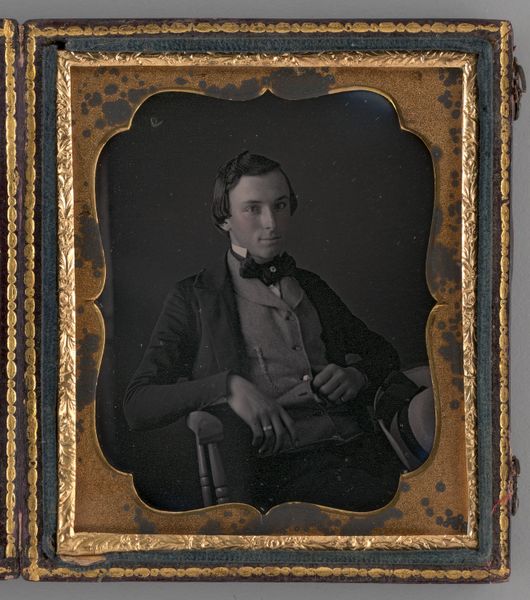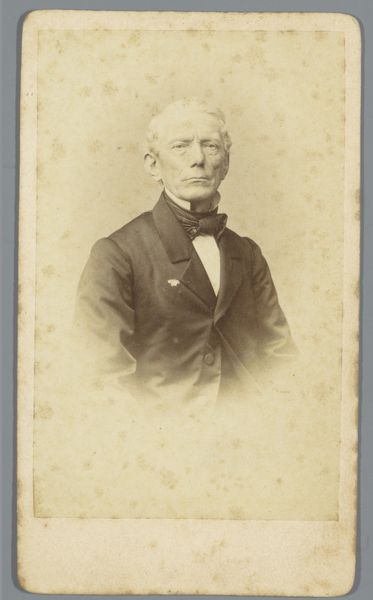
daguerreotype, photography
#
portrait
#
daguerreotype
#
photography
#
geometric
#
realism
Dimensions: 10.8 × 8.2 cm (4 1/4 × 3 1/4 in., plate); 12 × 18.6 × 1 cm (open case); 12 × 9.3 × 1.9 cm (case)
Copyright: Public Domain
Curator: The artwork before us is titled "Untitled (Portrait of a Man)." We believe it dates back to 1854 and it’s an exquisite daguerreotype, a very early photographic process, currently residing here at The Art Institute of Chicago. Editor: There’s such gravity to this portrait! The man’s eyes bore right through me, as if I’m the one being studied and remembered by time, not him. And there's something geometric and stark to the image, like a figure emerging from shadows. It's striking, haunting even. Curator: Indeed, and this impact likely springs from the very nature of the daguerreotype. Notice the sharp detail, the way light catches on the high points of his face, set against that almost velvety darkness. The oval vignette adds to the focused intensity, doesn't it? The formal composition, down to the crispness of his dress, pulls my attention straight to the eyes. Editor: It feels as though I’m intruding on a private moment, as if he reluctantly agreed to pause for the shot, a fleeting glimpse caught in an endless loop. What untold stories are locked within that expression? Perhaps I’m projecting, but I find such melancholy radiating from this small rectangle. Curator: That interplay of vulnerability and composure is really part of the essence of so many daguerreotypes. Because of the lengthy exposure times, the sitter would have had to remain exceptionally still, inevitably producing a somewhat formal, reserved presence. Though some see constraint, there's truth in realism too; it is about more than aesthetics— it is a social and technological capture, too. Editor: Knowing that time was needed really enhances how I see it! I start wondering what thoughts, hopes, anxieties were playing across his mind as he sat, statue-like, for this image to materialize. Photography, even then, wasn’t just documentation. For him, this single, captured moment represents how he chose to be remembered. Curator: Yes, this "Untitled" daguerreotype certainly gives us much to consider, about the person depicted and about the earliest days of photographic art. Editor: I agree. It has changed the way I view photographic works: more than pictures; the very memories of another person, in the frame.
Comments
No comments
Be the first to comment and join the conversation on the ultimate creative platform.
